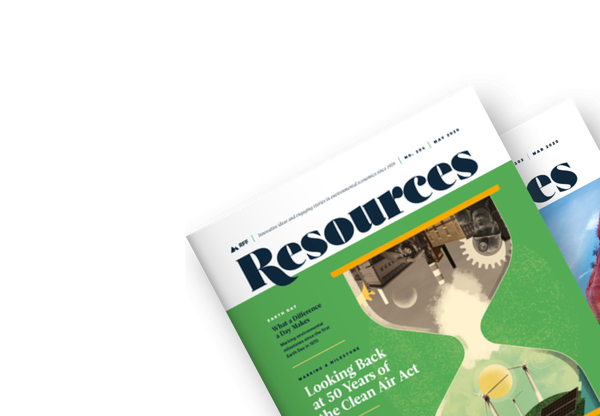
June 1994 / Magazine Issues
Issue 116: No Simple Solutions
In this issue of Resources, RFF senior fellow Alan J. Krupnick comments on his year on the staff of the President's Council of Economic Advisers. He remarks that one of the challenges of the job was convincing the "can-do" types at the White House to submit new ideas to objective analysis before (as he puts it) "running with them."
Reflecting on his comment, I realized how neatly it sums up RFF's characteristic role in a process that is often anything but neat. Apart from the evident pride we feel in seeing one (two, actually—see p. 11) of our researchers advising the President on economic policy, we can take satisfaction in what—and how—RFF contributes in general to debates about environmental policy. When highly topical or emotionally charged issues emerge, RFF researchers are able to examine them through a dispassionate lens. Closer scrutiny may well reveal that what is really taking place differs from what people assume is happening—and that solutions likewise differ from what is popularly assumed.
Three articles published here show RFF scholars working thoughtfully on high-visibility issues where urgent calls for action abound. Theodore Glickman weighs in on the debates about environmental justice. He is combining exposure assessment techniques with geographical information software in order to identify the distribution of certain environmental hazards in Allegheny County, Pennsylvania. Preliminary inquiry shows that environmental equity issues are not as cut and dried as some would like us to believe.
Programs that encourage businesses to reduce pollution voluntarily are attractive because they appear to be cost-effective. But do they really work? Seema Arora and Timothy Cason studied the factors that led businesses to participate in the EPA's 33/50 Program. They find that while companies have quite disparate reasons for participating in the program, the overall pollution reductions that could result may be substantial. (See "Inside RFF" for an item on RFF's own participation in another EPA voluntary program.)
Michael A. Toman and R. David Simpson also question popular wisdom in their article on the prospects for environmental improvement in the former Soviet Union. They recognize the enthusiasm there for receiving environmental aid, but they point out that, without reforms to the region's basic social and economic systems, the aid may not have the desired impact.
Lest anyone think this sort of independent thinking is new at RFF, Douglas Bohi and Joel Darmstadter have been applying it to energy policy since before the so-called energy "crisis" twenty years ago. As they observe in their retrospective, government policy interventions seriously worsened the problems then, and they fear we have not learned that lesson sufficiently well.
Those who define and execute policy understandably yearn for streamlined analysis that enhances quick action. RFF has a different role to play. We think that anything that advances our understanding of the true nature of environmental and resource problems and the true potential of solutions is important, even if it makes those problems and solutions uncomfortably complex. We continue to be grateful to those who support our search for such solutions.
— Robert W. Fri, President
Articles in this issue

